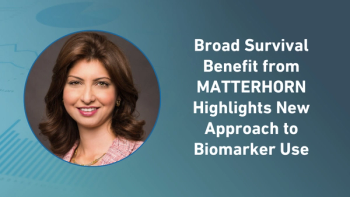
Plenary Session: Survey Focuses on Quality Oversight from The Avoca Group
Yesterday, Denise Calaprice-Whitty, PhD, Executive Director Survey Research and Relationship Management of biopharmaceutical consultancy at The Avoca Group, presented an overview of the data from its recent Clinical Service Provider Oversight Survey.
For the past two years, the survey was focused more on the industry issues of efficiency in outsourcing and the design of outsourcing strategies and tactics that would save time and money. Now that many sponsors have implemented these efficiency initiatives, they are moving on to the question of what kind of quality they are getting from their clinical service providers.
Calaprice-Whitty told Applied Clinical Trials that most sponsors are satisfied overall with the work they receive from clinical service providers and the value they are getting, but dissatisfaction rates are relatively high for the quality of service providers’ deliverables.
“Providers, on the other hand, are very happy with the quality they deliver to sponsors,” said Calaprice-Whitty. “Thus there is a divide between providers and sponsors as to the level of quality they feel that providers can deliver.” CROs basically state that they have the infrastructure and ability to do very high quality work, but are often constrained by sponsors’ demands.
“Some of it is financial, some is process, and some comes down to decision-making, for example about whether to keep a poorly-performing site in a study. The CROs say that the sponsors slash budgets and time allocations, insist on using ineffective blends of sponsor and CRO processes, and/or make other decisions that negatively impact quality, and the result, not surprisingly, is lower quality.”
When examining the data below the surface, Calaprice-Whitty found that whether and how quality management is planned proactively seems to play a large role in determining the quality ultimately delivered. The Avoca Group survey found that sponsors frequently don’t delineate their quality goals. “Many sponsors are not good at proactively thinking about quality expectations and quality management,” explained Calaprice-Whitty. “The bottom line in what we’re seeing is that when sponsors do plan for quality management in a proactive and structured way, they are generally pleased with what their providers wind up delivering.”
As an example, Calaprice-Whitty stated that among sponsors who use upfront, written Quality Agreements with their providers, 94% are satisfied overall with the output of these outsourcing relationships, whereas among sponsors that do not take such an approach, only 59% are satisfied.
This leads to the micromanagement and oversight question. “As a group, sponsors who apply proactive approaches to quality management are less likely than other sponsors to feel that micromanagement of CROs is necessary to achieve satisfactory results,” explained Calaprice-Whitty. “Failure to plan upfront leads to an increased need for micromanagement.”
Calaprice-Whitty presented only the top line of The Avoca Group data before the panel discussion involving representatives from both sides of the fence took place. The Avoca Group is taking advance orders for a full copy of the report, which should be available in April at
Newsletter
Stay current in clinical research with Applied Clinical Trials, providing expert insights, regulatory updates, and practical strategies for successful clinical trial design and execution.






.png)



.png)



.png)
.png)
